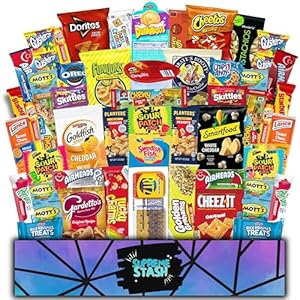In 1959, California-based plastic-scale model manufacturer Revell released the Dr Seuss Zoo, a set of model kits based on the work of children’s author and cartoonist Theodor (Ted) Geisel – aka Dr Seuss.
 The initial set included three models: Gowdy the Dowdy Grackle (a cheerful-looking quadruped with a bird’s head topped with umbrella-shaped protuberances), Tingo the Noodle-Topped Stroodle (a friendly beastie with a happy circus vibe and a neck as long as a giraffe’s), and sad-faced Norval the Bashful Blinket.
The initial set included three models: Gowdy the Dowdy Grackle (a cheerful-looking quadruped with a bird’s head topped with umbrella-shaped protuberances), Tingo the Noodle-Topped Stroodle (a friendly beastie with a happy circus vibe and a neck as long as a giraffe’s), and sad-faced Norval the Bashful Blinket.
In 1960, three more models were added – Grickily the Gractus, Busby the Tasselated Afghan Spaniel Yak, and Roscoe the Many-Footed Lion.
All of the kits included a variety of multi-coloured plastic parts that were fully interchangeable with each other, allowing children to mix and match to create new Seuss-inspired creatures.
The parts were cast in polyethene, a slightly pliable plastic that allowed for a snug fit, regardless of how many times the animals’ configurations were altered.
They were snap-together kits (making model glue unnecessary) and marketed with the slogan “You can put us together in millions of wacky ways!” According to Revell’s publicity department, there were around 14 million different combinations.
A second line of model kits – Dr Seuss Beginners Hobby Kits – was produced. The introductory kit depicted the star of Dr Seuss’s flagship title, the Cat in the Hat.
 A Revell print advertisement at the time claimed, “Even a six-year-old can easily cement together the 25 big, colourful styrene pieces and create a whimsical figure almost a foot tall.”
A Revell print advertisement at the time claimed, “Even a six-year-old can easily cement together the 25 big, colourful styrene pieces and create a whimsical figure almost a foot tall.”
More Beginner’s Hobby Kits followed in 1960 – The Birthday Bird (cleverly designed to also serve as a cake decoration) and Horton the Elephant (complete with nest, egg, and tiny baby flying elephant).
The Cat in the Hat kit was also re-released, this time featuring small figures of Thing 1 and Thing 2. A Grinch figure was developed but never brought to production.
Ted Geisel closely oversaw the production of both lines, working with two sculptors for many months to capture that wacky vibe that epitomised Dr Seuss books.
Due to Geisel’s creative participation and his goal of quality above all, the Revell model kits released in 1959 and 1960 remain the very best examples of the Dr Seuss style (and mindset) translated to three dimensions.
Trending Products


![NOW Country Classics: 90âs Dance Party[Lemon & Spring Green 2 LP]](https://m.media-amazon.com/images/I/61hVquUofcL._SL500_._SS300_.jpg)





